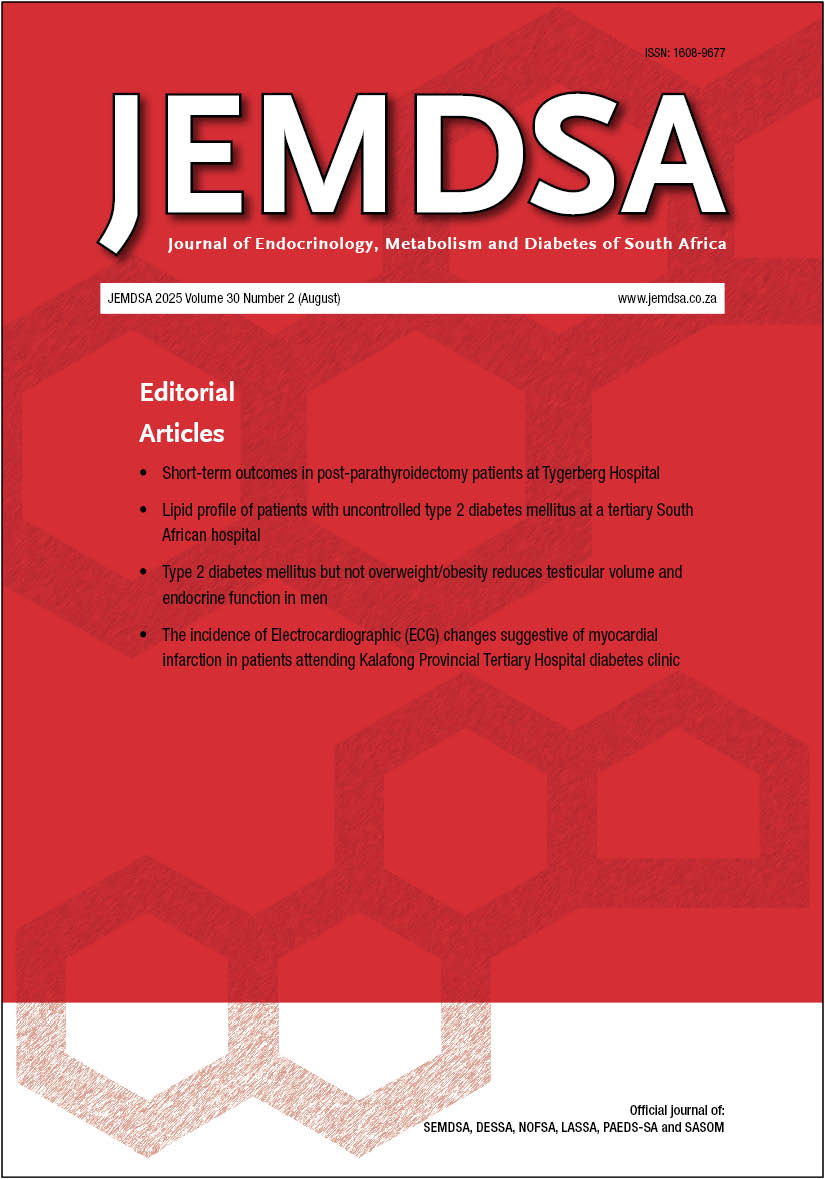The incidence of Electrocardiographic (ECG) changes suggestive of myocardial infarction in patients attending Kalafong Provincial Tertiary Hospital diabetes clinic
Keywords:
diabetes mellitus, electrocardiographic changes, myocardial infarctionAbstract
Aims: This study aims to determine the incidence of new electrocardiographic (ECG) changes suggestive of myocardial infarction (MI) in diabetic patients, both with and without typical symptoms. Additionally, it seeks to identify other ECG abnormalities indicative of the effects of diabetes mellitus (DM) on the heart.
Methods: Patients aged 30 years and older were selected from the DM clinic database covering the period from 2008 to 2023. A total of 732 patients were initially identified, of whom 634 were eligible for inclusion in the study. A subgroup of 568 patients had normal baseline ECGs. ECG abnormalities were reviewed and discussed with the senior physician, with findings documented in the electronic database. Two ECGs, at least one year apart, were compared. In patients with more than two ECGs, the first one with abnormal findings was compared with the baseline ECG. Kaplan–Meier analyses were performed to assess the time to new ischaemia and MI in patients without baseline ECG abnormalities comparing patients with Type 1 and Type 2 DM (hazard ratio [HR] 2.082, 95% confidence interval [CI] 1.049–4.133).
Results: Of the patients eligible for the study, 83% (n = 568) had normal ECGs at baseline. Among them, 33.1% (n = 210) developed ECG abnormalities at follow-up. Ninety-seven patients (15.3%) showed ECG signs suggestive of myocardial infarction/ischaemia, with 66 (16.7%) females and 31 (13%) males exhibiting these changes. The most common myocardial regions affected were the inferior wall, followed by the inferolateral wall, while the anterior wall was the least commonly affected. Type 2 DM patients exhibited a higher incidence of ECG changes suggestive of MI compared with those with Type 1 DM (16.7% vs. 9.8%). Other common ECG abnormalities included atrioventricular (AV) conduction defects (right and left bundle branch blocks, first-degree AV block), P-wave abnormalities (P mitrale), increased incidence of left ventricular hypertrophy (LVH), and poor R wave progression.
Conclusions: A higher incidence of myocardial ischaemia and other ECG abnormalities were observed in diabetic patients, particularly those with Type 2 DM.
Downloads
Published
Issue
Section
License
Copyright (c) 2025 Author/s

This work is licensed under a Creative Commons Attribution-NonCommercial 4.0 International License.

